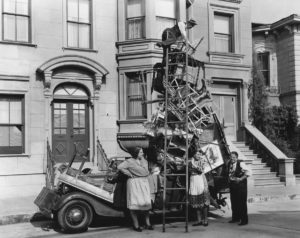Occupation Certificate
An Occupation Certificate issued under the Environmental Planning & Assessment Act 1979 allows a person to occupy and use a new building or change the use of an existing building.
An Occupation Certificate verifies that the issuing Principal Certifying Authority (PCA) for the development, which may be Council or another accredited certifier, is satisfied that the building is suitable to occupy or use in terms of the requirements of the Building Code of Australia and the relevant Development Consent.
To obtain an Occupation Certificate, the following, although not limited to, may be required:
- Development Consent or Complying Development Certificate
- Construction Certificate
- Fire Safety Certificate
- Compliance Certificate
- Building Sustainability Index Certificate (BASIX)
Please note from 1 September 2018, due to the recent changes to the EPA Act as amended (on and from 1 March 2018), section 109H(2) renumbered as section 6.10 a developer who has an existing development consent will not be able to obtain an interim occupation certificate for a partially completed building, or part of a building.
Part 6.10(1) of the new EPA Act
(1) An occupation certificate must not be issued unless any preconditions to the issue of the certificate that are specified in a development consent have been complied with.
Sections 6.10(2) and (3) provide that the Environmental Planning and Assessment Regulation 2000 (‘EPA Reg‘) may contain requirements which must be complied with before an occupation certificate can be issued.
Although section 6.10 appears in the amended EPA Act, its operation has been postponed to 1 September 2018 (see clause 18 of the Environmental Planning and Assessment (Savings, Transitional and Other Provisions) Regulation 2017) and the former s109H(2) remains in force until that date.
Building Certificate
A Building Certificate is a document issued by Council relating to an existing property.
A Building Certificate is usually requested by vendors or purchasers to provide an assurance that the property being purchased or sold will not be the subject of Council issuing a Work Order, Demolition Order, etc
In certain circumstances, a Building Certificate is requested by a Vendor when building work is undertaken to the property, without the appropriate approvals being issued by Council or a Private Certifier.
A building certificate states that Council will not take any action for a period of 7 years to Order, or take proceedings for an Order, to have the building covered by the certificate to:
- be demolished, altered, added to or rebuilt or;
- resolve any encroachment by the building onto land under the control of Council.
Building Certificate application requirements
A Building Certificate application may be requested for either a part or whole of a building and may be requested by:
- the owner of the property;
- another person, with the consent of the owner of the property;
- the purchaser of a property under a contract of sale (including the purchaser’s solicitor or agent);
- a public authority that has notified the owner of its intention to apply for the certificate.
A Building Certificate application is to include an original or certified copy of a survey report and plan if it is related to residential zoned land. For land situated in other zones you may be required to provide a survey report.
The survey report and plan must be current, and represent a current “footprint of the land” ie the property and buildings as they currently exist at the time of lodging the application. Additional information may also be required, ie building plans, specifications and certificates, to allow Council to assess the application.
This article is provided for reference purposes only, and is not intended to be relied upon or as a substitute for legal or other advice. Should you have any queries please do not hesitate to contact our office to discuss.
Penny Browne Conveyancing

